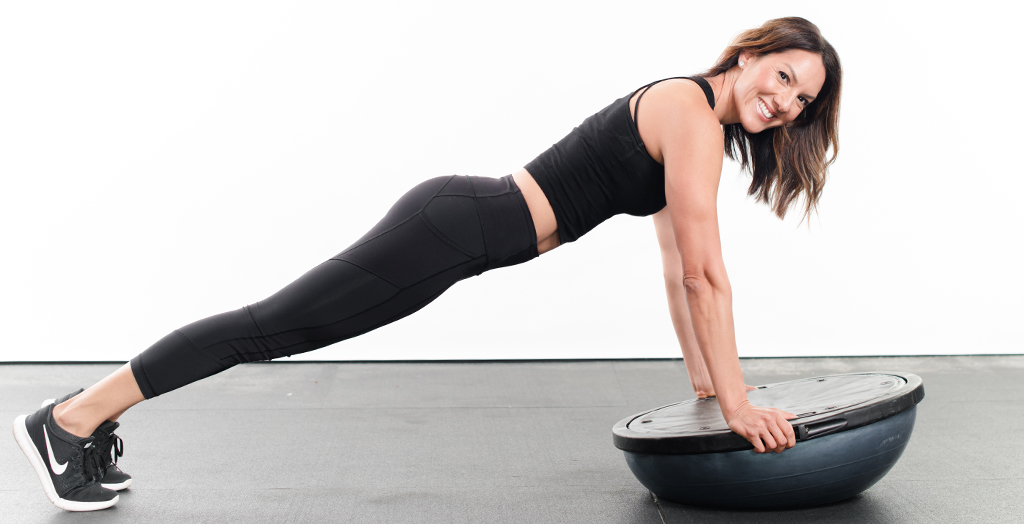It’s all About Balance:
The Importance of Implementing Balance Training into a Fitness Regimen
By Emily D.
How many times have you heard someone say, “I have horrible balance”? I know that I, personally, am guilty of saying it many times, myself.
Balance, perhaps one of the most underappreciated components of physical fitness, is essential to all functional movements. Maintaining good balance allows for optimum force production and improvements in lower extremity biomechanics. This type of training increases the demand placed on the nervous system to activate the right muscles at the right time, allowing for optimal movement patterns. It is also frequently implemented as an integral part of injury prevention programs, as there is a strong correlation between risk of injury and dynamic balance skills. The benefits to implementing balance training– as well as the detrimental effects that can occur as a failure to do so– will leave you astonished.
Poor balance impairs coordinated movement in people of all ages. Unless the body can first maintain balance and postural control, no functional movement can happen. By training the body’s balance capabilities, one can greatly enhance his or her neuromuscular efficiency. This is because balance training improves one’s ability to move and change directions under various conditions, while maintaining equilibrium over its center of gravity– a term referred to as dynamic balance. Poor dynamic balance has shown to greatly increase the risk of injuries, ankle sprains, and falls in the elderly.
Now that we have established the importance of good balance, how do we incorporate this into our training? In order to get the beneficial rewards, perform balance training at least 10 minutes a day, three times per week.
When beginning balance training, it is recommended to start simple, and slowly progress to more complex, unstable, and dynamic exercises or, what we like to call, increasing proprioceptively. Examples of this type of progression include changing the surface, or base, of support. For example, you may start performing exercises on the floor, and then increase to a half-foam roller, then to a balance disk, and finally progressing all the way to a BOSU ball.
Another way to progress through balance training is by changing the lower body position. Begin using two legs on a stable surface before advancing to one leg; once comfortable, follow this with two legs on an unstable surface and progress to single-leg exercises on an unstable surface.
When first implementing balance training components to your fitness regimen, follow level one of balance training, known as balance stabilization. Here, the non-balance leg, arms, and core should move in a very slow and controlled manner. A single-leg balance, single-leg balance with reach, and single-leg lift and chop are all examples of exercises to use in this level of training.
The next level is balance strength, and involves exercises moving the balancing leg through a full range of motion, with eccentric and concentric muscle actions. Try including single-leg squats, single-leg Romanian deadlifts, and lunge to balance at this level.
The third and final level of balance training is the balance power level. Here, we use even more movement of the balancing leg by incorporating a hop (single-leg jump) followed by stabilization (pausing in single-leg balance for 3-5 seconds upon landing). When you feel you are ready to progress to the balance power level, try a single-leg box hop up with stabilization, or a single-leg box hop down with stabilization.
It is crucial to not overlook the importance of incorporating balance training into your fitness routine. By practicing this type of training, and improving dynamic balance, you will optimize your body’s movement patterns, force production, lower-extremity power, as well as decrease the risk of injury and falls.
Happy balancing!
Source: NASM Chapter 10- Balance Training Concepts
A recent graduate of the University of Rhode Island with a degree in Nutrition and Dietetics, Emily understands the struggles of weight loss and how what we eat can impact our bodies.
“My greatest pastime and joy in life is running! I dedicate most of my free time to training for marathons and other races, and my approach to personal training is an extremely beneficial way to increase endurance and strength for any athlete. I also have experience teaching therapeutic exercise, for those seeking pain relief, greater flexibility and increased range of motion.”






